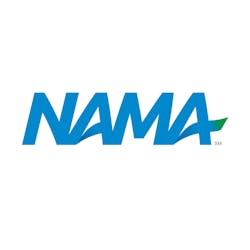Self checkout micro markets are the fastest growing format in automatic merchandising, so no one was surprised when a panel of micro market system providers and operators drew a huge turnout at the National Automatic Merchandising Association OneShow at the Sands Expo Center in Las Vegas last week.
The panel was organized to allow each of the five better established micro market providers to offer comments on their systems, followed by operators who have used the systems, followed by questions from the audience. The meeting drew a standing room only crowd and was among the best attended sessions during the OneShow.
Dominic DeFrancesco, corporate marketing director at Vistar Corp., served as moderator and introduced the session noting that his company supports micro markets and has two different sets of guidelines for operators based on their level of micro market experience.
First to speak was Jim Brinton, CEO of Avanti Markets, who noted his company has just less than 1,000 markets on location in the U.S. He said the company recently introduced an ADA-compliant model and another model tailored to smaller locations.
Brinton said his company has 15 employees. The company also has an operator advisory panel.
Joe Hessling, CEO of 365 Retail Markets, noted his company provides both hardware and software for the micro markets.
Jim Mitchell, president of Company Kitchen, said operators need to consider four issues: 1) Success is not about the equipment; in the future, there will be a lot of equipment available; 2) Success requires having a unique selling proposition; 3) Exclusive market territory, which his company provides is important; 4) A good level of aftermarket support from the system provider. He said his company offers 24/7 support.
Terri Starnes Bryant, president of MicrotronicUS, noted her company allows operators to use the same stored value card for its kiosks as for its vending machine card readers. This makes it easier to have a micro market in one area and cashless vending machines in another.
Aaron Speagle, CEO of Breakroom Provisions, noted that he launched the first micro market 10 years ago, Freedom Shopping, and also helped launched Avanti Markets. He said Breakroom Provisions allows micro market operators to own all the data generated by the kiosks they operate.
He noted his company has three different kiosk models.
Kevin Van Hazel, a partner in Ace Vending in Tempe, Ariz., uses Avanti Markets and said he is now placing one per week. He said a micro market generates double the revenue of a vending bank in locations and has better profit margins. He said he seeks locations with 150 to 200 employees minimum for a micro market.
The micro market works well for employee wellness programs, Van Hazel said, since it allows more variety than vending.
Van Hazel also noted later in the meeting that he can raise prices faster at the micro market than in vending machines, and unlike vending, with micro markets it is easier to charge a sales tax and raise prices in whatever increments he wants.
Steve Luccia, chief financial officer for Canteen Vending Services Inc., noted his company is using 365 Retail Markets. Like Van Hazel, Luccia said the micro market generates twice the sales of a vending bank. Another important advantage he noted is the micro market’s ability to win new customers.
Luccia compared the micro market to his company’s 2bU vending machine, which offers at least 30 percent local products and features organic, vegan, gluten-free and kosher products, as well as other options. When these machines are placed in a location, there is no cannibalization of other vending machines since the 2bU machine attracts a different customer.
Luccia praised the micro market as a way for vending operators to regain many of the customers they have lost over the years.
Luccia said the micro market attracts a higher percentage of customers than a vending bank. Where 10 percent of the people at a location use the vending machines, 20 percent to 30 percent use the micro market.
Luccia further noted that food products account for 35 percent of the products in a micro market, which is higher than the percent in a vending bank.
Luccia said the best increases over vending have occurred in those locations where vending sales were weakest.
He noted that micro markets have a certain learning curve for operators and require a longer term investment than OCS.
John Barnes, president of the vending division at Mission, Kan.-based Treat America, uses the Company Kitchen. He said his company has placed 125 micro markets in the last 10 months.
Barnes said the micro market has proven a successful selling tool, allowing the company to win accounts.
The micro market on average generates 50 percent more sales than a vending bank, Barnes said.
Rick Austin, president of Georgia Vending Services in Alpharetta, Ga., uses the MicrotronicUS system. He said he was skeptical about it initially, but he has been pleasantly surprised how easy it has been to use it in the year he has operated it at an account with 1,500 employees.
Austin said he appreciates the fact that MicrotronicUS has taken the time to help him with integrating the micro market data with his vending software system.
Vic Pemberton, owner of Pepi Food Service in Bainbridge, Ga., uses the Breakroom Provisions system. He said the micro market gives a vending company a new career opportunity for employees. “Your employees win,” he said.
Pemberton noted that vending sales have been declining in recent years.
In asking customer to rate his service, he said the micro market generates higher scores than the vending.
During the question and answer session, the first question posed to the panel was what commissions they pay.
Most panelists said they pay no commission on the micro markets.
Canteen’s Luccia said in the future, commissions are possible as the micro markets become more pervasive and operator competition increases.
The second question raised was how much theft occurs in the markets.
Luccia said theft has been around 0.3 percent. He said the surveillance camera serves as a deterrant.
Georgia Vending Services’ Austin said he was initially concerned about theft, and he is not sure how much theft there has been. “I can’t know because I can’t run the functionality in a timely manner to know,” he said.
Pepi Food Services’ Pemberton took issue with this and said the software allows an operator to know how much theft occurs. He said in his experience, two or three customer employees have been caught stealing and were fired.
Pemberton said an operator must be willing to address theft with customers. However, he said the amount of theft has been low.
Another questioner asked the providers what they are doing to help operators use the sales data.
Avanti Markets' Brinton said his company shares sales data from all of the micro markets to allow operators to know what are the better sellers. For example, string cheese, an item he never would have thought to go in a vending machine, has proven a strong seller in micro markets.
365 Retail Market’s Hessling said the data is being used to develop both product and price point suggestions.
Company Kitchen’s Mitchell said he is developing algorithms to better understand what products are selling best.
The topic of ADA compliance was raised. New access requirements have been released by the U.S. Justice Department.
Brinton said he has developed ADA compliant kiosks. He said the kiosks are not required to meet ADA standards, but certain customers want the kiosks to meet the requirements.
One questioner who has used micro markets wanted to know how well multi-serving bags have performed in micro markets.
Ace Vending’s Van Hazel said the multi-serving bags have not been good sellers.
Canteen’s Luccia said it depends on the demographics of the location. He said the products are not good sellers in offices.
Asked about unforeseen obstacles, Pepi Food Service’s Pemberton said it is challenging organizing the warehouse to deliver the proper selection to accounts. This requires a certain amount of training.
Asked how they integrate micro market prices with vending, panelists agreed the two can coexist well in the same account.
Panelists also noted that some accounts are concerned how the operator uses the customer purchase data. The operator is able to learn about individual customer purchasing from the stored value cards.






